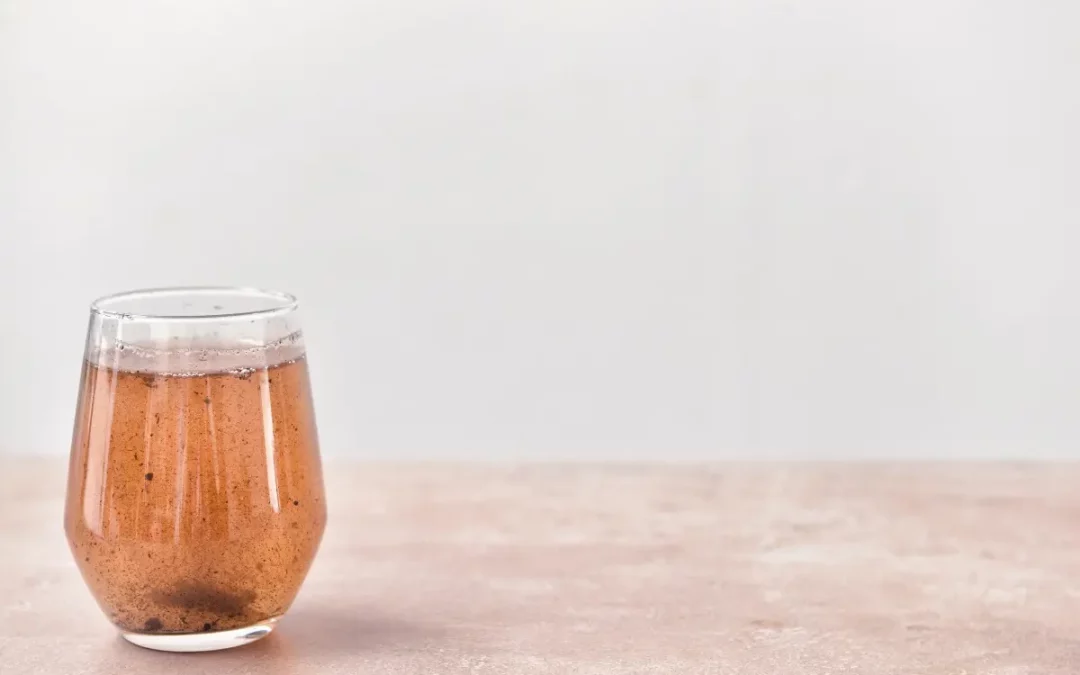Do you suffer from smelly drinking water in summer? There are several reasons why your tank water might not smell, taste or look like it should do: Crystal clear, odourless and be tasteless! To be fair; it should taste great!
Read more >>>.
Do you have smelly drinking water?
Do you have smelly tank water?
Does your tap water smell like sewage?
Does your drinking water tastes weird?
Smelly drinking water in NZ? No, thank you!
If tap water draws attention to itself through unpleasant odours, colour or taste, action is required in any case. However, there are many possibilities why your drinking water smells weird. From our experience, the cause often lies in the rainwater storage tank. Whether it is algae blooming in the tank, decaying animals like a dead possum or sediments on the bottom of the water tank, all of these can significantly affect the taste, colour and especially the quality of your drinking water.
When odd odours, colours, or tastes take centre stage, it is time for water detective work. In this article, we unravel the mysteries for funky, smelly drinking water. Join us on this aromatic escapades as we decode the weird smell wafting from your rainwater harvesting tank.
>> Do you have smelly tank water?
>> 1. reasons for smelly tank water: Algae Growth in Storage Tank
>> 2. reasons for smelly tank water: Bacteria Overgrowth in Tank Water
>> 3. reasons for smelly tank water: Dead Animals in Water Tank
>> 4. reasons for smelly tank water: Dust & Organic Matter
>> 5. reasons for smelly tank water: Sediments on Bottom of Water Tank
>> SOLUTIONS for smelly drinking water
Fresh, healthy potable water
What are the characteristics of the smell and taste of safe tap water?
Odourless, fresh and with a delicious taste, this is how drinking water should be. Thus, the water quality can best be recognised by its smell and taste. Your tap water must not have any odour, taste or colour. Consequently, drinking water should have an unusually intense aroma under no circumstances. If the tap water tastes or smells bad, there may be pollutants/bacteria in the water and thus also in the drinking water. Tap water should be odourless, clear and have no particular taste to be fit for human consumption.
But what are the reasons when your tap water smells bad?
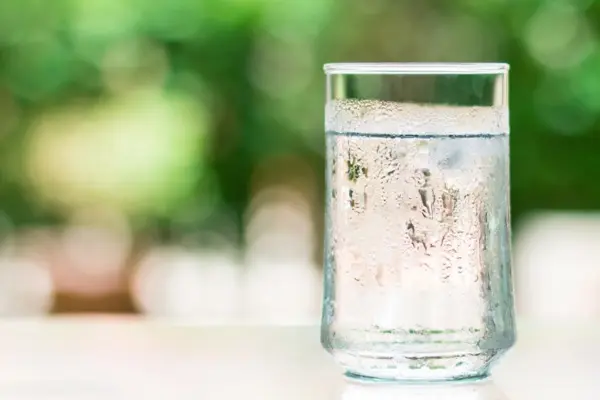
Reasons for smelly drinking water in NZ
Do you have a smelly water tank?
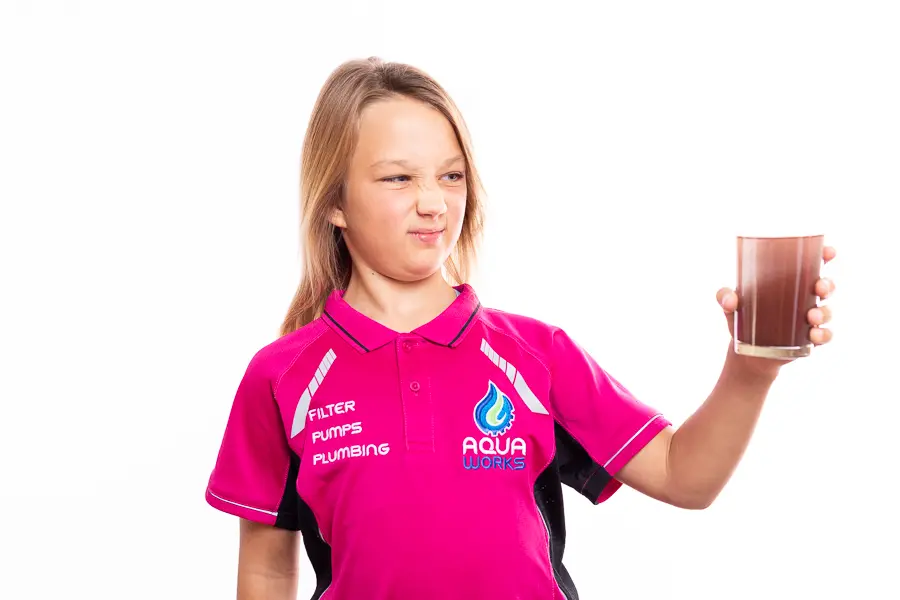
If the drinking water from the tap has an unpleasant taste or smell, first check whether the rainwater leaves the water tank with an unpleasant odour. At the height of summer, temperatures rise, especially to the delight of everyone who is drawn to our beautiful beaches. However, we often forget that the temperatures in our water tank also rise. It is not unusual for us to experience that the temperature in the tank is 45 degrees Celsius when we are on site. Especially at this time of year, it is common for the drinking water from the tank to have a bad taste and smell. The most frequent causes of smelling water are environmental factors such as the decomposition of organic material.
5 Reasons for a smelly drinking water from your water tank
Algae growth in the water tank.
When light enters the rainwater tank through the openings and inlets on the top of your tank, it creates the perfect environment for algae growth. These photosynthetic organisms thrive and bloom under the influence of sunlight.
Especially in the hot summer months, these are favourable growing conditions for exponential algae increase in the water supply. Consequently, this unwanted intruder can have a significant impact on your water quality.
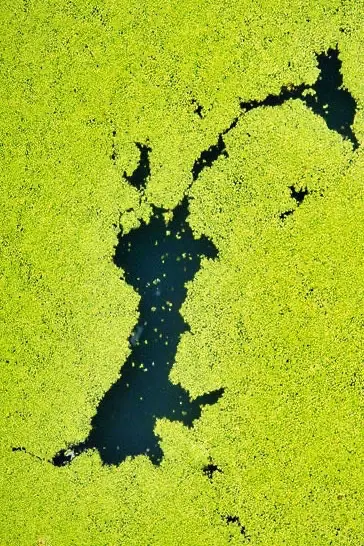
By installing gutter meshes, rain heads, first-flush diverters and tank screens, you can reduce the nutrient levels in the water supply. If bacteria growth is already very advanced, the tank water must be treated to kill the existing algae. We strongly recommend having this work done by a specialist company.
Call us at 0800 AQUA WORKS, and we will take care of your request immediately. Our highly qualified service team has longstanding experience in water treatment.
DO NOT add chlorine to your water tank unless you know exactly what you are doing. Even though chlorine is a long proven disinfectant for drinking water treatment, it can have adverse health effects. When chlorine is added to a water tank containing a high proportion of organic substances, the two react. As a result, carcinogenic by-products such as trihalomethanes and haloacetic acids can be formed. There are better products for shock dosing water tanks that dissolve in hydrogen and oxygen and have no adverse effects on your health.
Bacteria overgrowth in the water tank.
If microorganisms such as viruses or bacteria enter the water cycle of your rainwater harvesting system, this will result in immediate contamination of the drinking water. But how do the health-threatening bacteria get into the tank water? It’s simple: the roof is the catchment basin for your rainwater. If not stopped by pre-filters, whatever is on it gets into the water tank.
When we test the rainwater quality, we find all kinds of impurities in it, like poo from birds, possums and other small rodents. The main bacteria found in many rainwater tanks are Escherichia coli (E. coli), transmitted via faeces, especially from these animals. These can cause gastrointestinal diseases such as vomiting and diarrhoea in the human organism. Once the E.coli bacteria multiply in the tank water, it is no longer safe for human consumption. Especially in the hot summer months, the heat in the water tank contributes to an exponential growth of bacteria as these are favourable conditions.
Installing a UV filter will eliminate these bacteria by 99%. This way, you can enjoy healthy and safe rainwater all year round. Give us a call on 0800 AQUA WORKS, and we will come for a free onsite visit to check the best option for your property.
Dead animals in the water tank.
It is not uncommon for animals to get into the water tank. Whether dead birds, frogs, lizards, smaller rodents or even possums, all uninvited intruders pose a risk to your water quality. Depending on the severity of the tank water contamination, immediate action might be required. Worst case scenario is: either the entire tank must be discarded or sterilised by chlorine shocking.
This is definitely not a DIY job and requires expert knowledge!
Give us a call on 0800 278 296, and we will advise you on your best options so that you can enjoy healthy drinking water again as quickly as possible.
For the future, check your water tank regularly and remove possible intruders immediately. Ensure that all inlets and outlets of the water tank are sealed to prevent external intrusion. If you have any questions, please do not hesitate to contact us. We are happy to come for a free onsite visit and check your rain harvesting system in NZ.
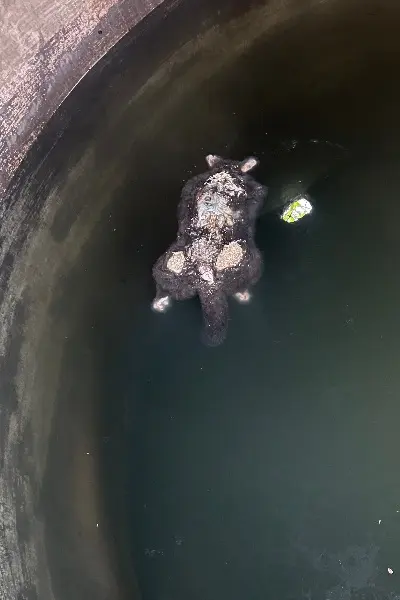
Dust and organic matter in the water tank.
Dust, seed pots and pollen, but also bird poo and other animal faecal matter end up on your roof and accumulate there. When the rain starts, not only does your water tank fill up, but these unwanted substances, organic and inorganic fine particles, are washed into the water supply. Additionally, building materials such as asbestos and lead-containing coverings, paints and solder can get into your drinking water supply. UV radiation can cause these chemicals to corrode, flake off, decompose from the roof, and end up in the water tank. All of this usually leads to a deterioration in the quality of the rainwater in the tank. In the worst case, the water is unusable for human consumption.
Ensure that you install gutter grates, Maelstrom pre-tank filters, rain heads, first flush diverters and tank screens. This way, you will reduce the impact of dust and organic matter in your water tank.
Organic sediment on the bottom of the water tank.
When leaves from Poplar trees, Pohutukawa flowers, small branches and twigs land on the roof, the decomposition process already starts in the gutter. The vegetation then enters the water tank via the downpipes and affects the water quality. Even if this does not pose an immediate health risk, the problem should be remedied; otherwise, issues such as anaerobic fermentation can take place. Organic and inorganic sediments deposit on the ground of your water tank. This debris might contain fine particles that are hazardous to health, such as heavy metals. Heavy rainfall can stir up these sediments resting on the bottom of the tank and resuspend them in your water supply. Finally, this might pose a risk to your well-being.
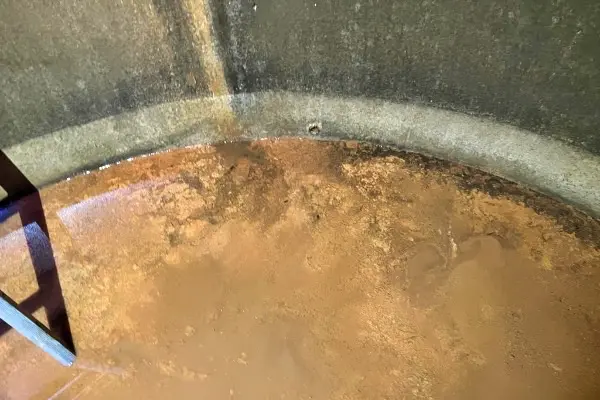
Cleaning a water tank is not a DIY job.
Regular removal of built-up sediment at the bottom of the tank is necessary to ensure consistent drinking water quality. An expert should, in any case, carry out the cleaning of a water tank. In January 2022, five people near Kumeu were “affected by carbon monoxide fumes” while cleaning their water tank (1). They suffered severe injuries, and two people ended up in hospital. In 2017, three people died on a farm in NSW, Australia, due to carbon monoxide poisoning (2). The farmer was cleaning the inside of the water tank with a high-pressure water pump when getting into trouble. His wife and brother, who rushed to his aid into the tank, also did not survive.
Call us on 0800 278 296, and we will take care of your professional tank cleaning by a specialised business. At the same time, we will check your entire rain collection system to ensure that everything is working perfectly to provide your home with pure and healthy drinking water.
Solutions for smelly drinking water
Rainwater harvesting system NZ for tasty drinking water
In New Zealand, rainwater harvesting is typically a safe, economical and sustainable source of high-quality drinking water. Most farms, households, lifestyle blocks, and baches have rainwater harvesting systems, especially in rural areas in the whole Rodney area. In fact, many of our long-time customers claim that collecting rainwater is a safer method than being on mains. In this case, water is usually extracted from dams or underground aquifers. To kill bacteria and make it safe to drink, this water is treated with chemicals such as chlorine before being pumped through a pipe network to your property.
However, the quality and safety of your rainwater lie in proper rainwater collection and storage tank systems.
Ozone water treatment & UV filters for safe drinking water
Preventing contamination from leaves, decaying animals, bacteria and algae growth is key to maintaining high water quality. With a custom-designed rainwater harvesting system, you get the water quality and safety that makes it fit for human consumption. Our team will be happy to answer any questions around installation and maintaining your rain harvesting system in NZ.
While unpleasant smelling or tasting water is not always a cause for concern, it is still essential to get to the bottom of the reason. Get your water tested if you are concerned about contaminants in your drinking water that could pose a health risk. We are collaborating with a reputable laboratory. Ultimately, based on our long-term experience in rural water treatment, we recommend an ozone tank water treatment system or UV filtration. This way, we ensure that harmful microorganisms like E.coli will be eliminated. Consequently, you can enjoy safe, healthy drinking water available throughout your property for all purposes all year long.
Call us today on 0800 UV to schedule a free on-site appointment.
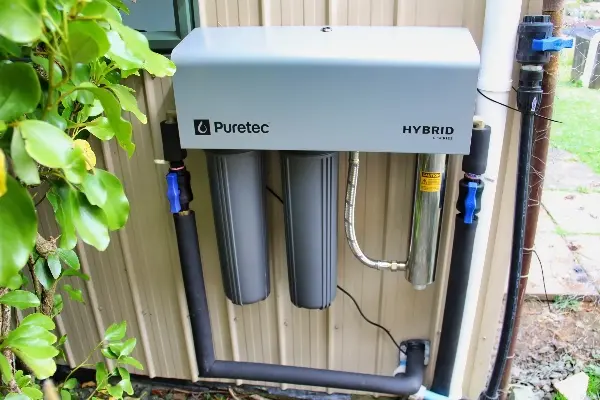
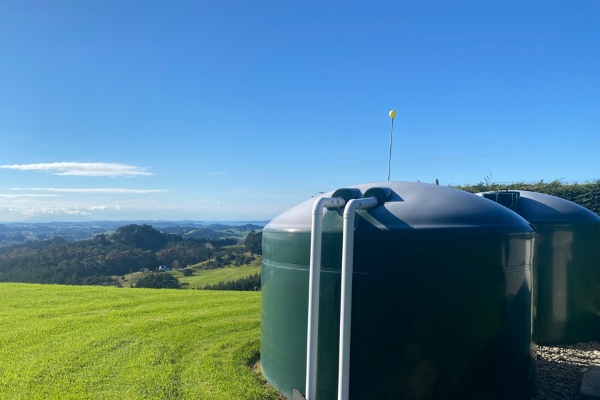
(1) NZ Herald NZ (2022). Water tank rescue: Five people treated, two in critical condition. Retrieved 25.1.2022 from https://www.nzherald.co.nz/nz/water-tank-rescue-five-people-treated-two-in-critical-condition/7IQIGGIXMMBFVJ2T37YXW2NEUI/
(2) ABC News (2017). Carbon monoxide poisoning suspected in deaths of three people in Gunning water tank. Retrieved 25.1.2022 from https://www.abc.net.au/news/2017-02-17/poisonous-gas-detected-in-water-tank-where-three-bodies-found/8279576

